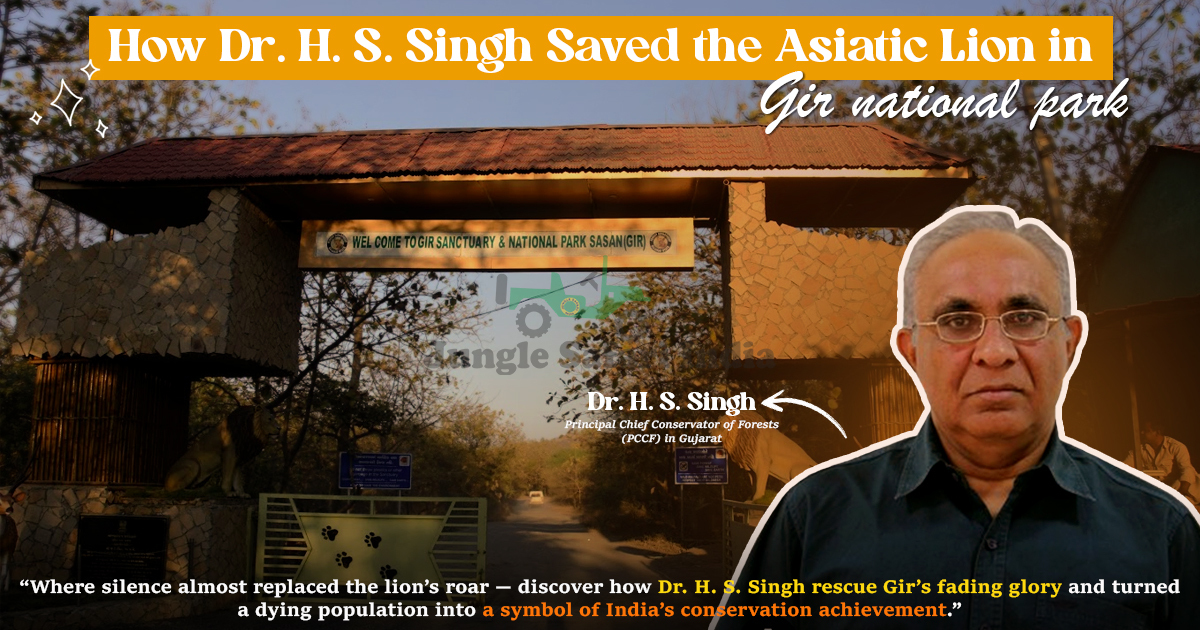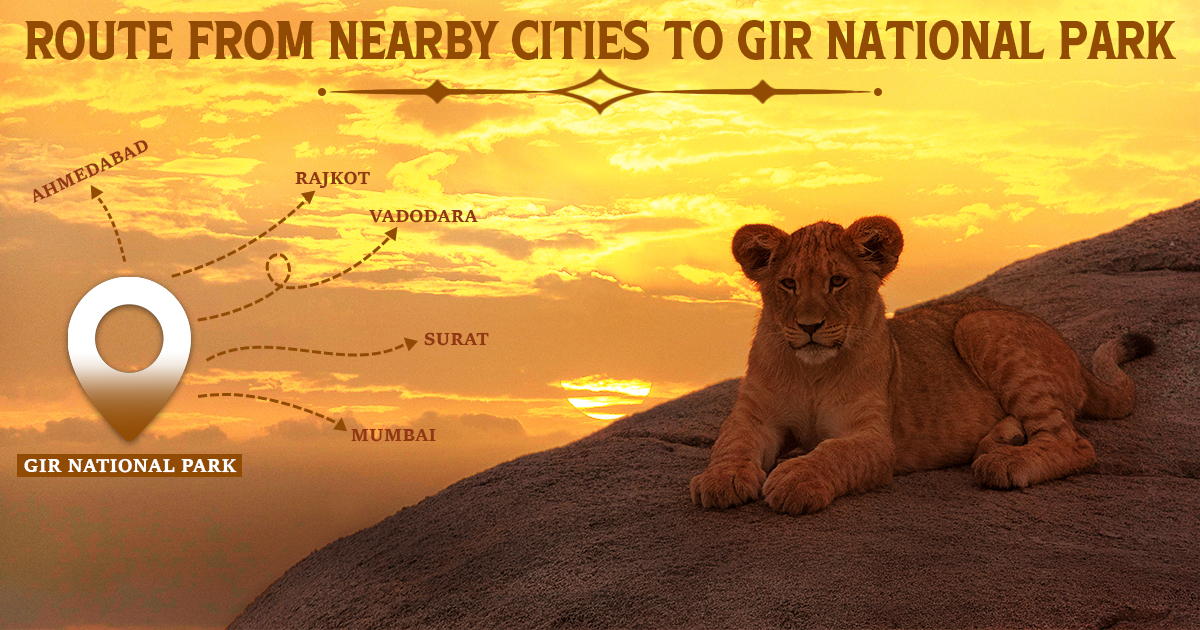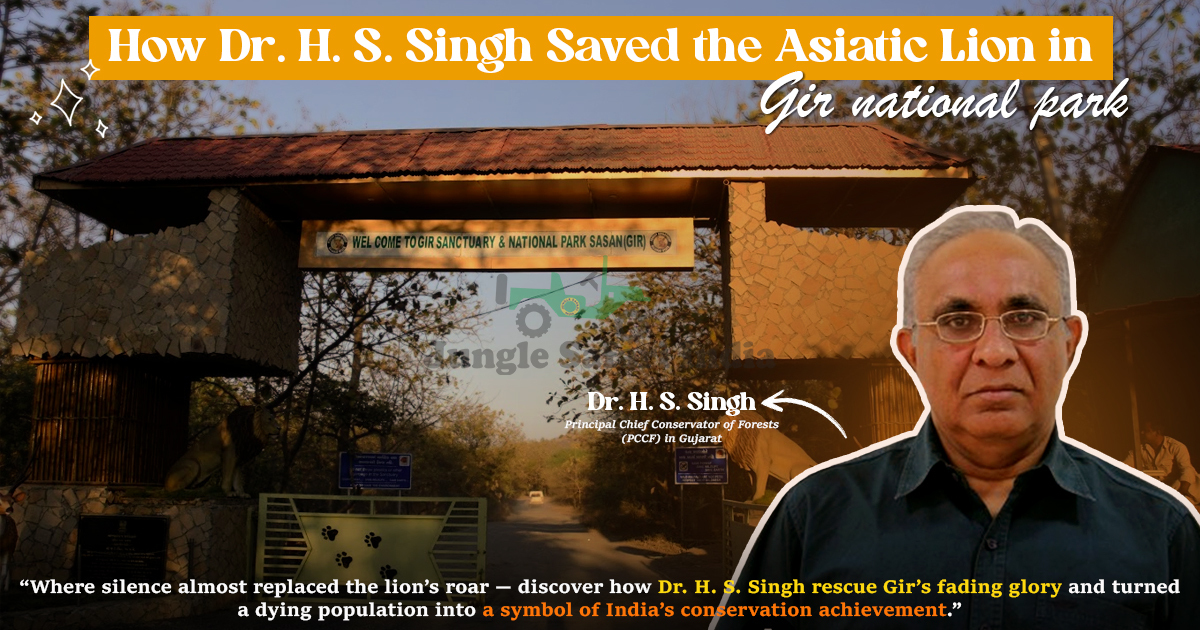How Dr. H. S. Singh Saved The Asiatic Lion In Gir
Gir National Park
Gir safari booking
- Author : Adeeb Sahil
- Date : September 18, 2025
The Asiatic lion is a rare and important animal. Long ago, this lion was close to disappearing forever. Today, it lives safely in Gir National Park in Gujarat. The survival of this lion is strongly linked to the hard work of Dr. H. S. Singh. He gave his full life to protect the Asiatic lion and its forest home. Because of him, the number of lions increased, and Gir became a safe place for them.
Dr. Singh worked with great care to make sure the lions had food, space, and safety. He also helped solve problems between lions and people living near Gir. His actions changed the future of the Asiatic lion and gave hope for wildlife protection in India.
Early Challenges Faced By Asiatic Lions
In the 1970s, only about 180 Asiatic lions were left in India. This small number was very risky for their survival. The lions lived only in the Gir forest, and this place was not enough for a growing population.
One of the biggest problems was a lack of wild prey. When the lions did not find enough food in the forest, they started hunting the cattle and goats of the villagers. This created anger among local people because their animals were their main income. In response, some villagers killed lions in revenge. This increased the danger for the already small population.
The forest also had limited space and resources. Overcrowding could lead to sickness and fights among lions. Without better planning and care, the future of the Asiatic lion was very uncertain.
Dr. H. S. Singh’s Contribution To Lion Conservation
Dr. Singh studied the lions carefully and collected facts through research. He wanted to solve the problem in a scientific way, not just by simple protection. He studied how lions live, how they hunt, and how they interact with people and other animals.
He counted lions regularly and recorded their movements. This helped him see if conservation work was successful or not. With this data, he made better decisions and used resources wisely.
Another big step by Dr. Singh was to increase the area for lions. He worked to create safe pathways, called corridors, so lions could move to new areas without danger. This gave lions more space, reduced conflicts with people, and helped maintain healthy genes in the population. He always focused on the balance between lions, prey, the forest, and local people.
Major Success: Growth In Lion Population
By 2010, the number of lions in Gir had grown to more than 400. This was a clear result of Dr. Singh’s work. After this, the numbers kept rising. Lions also started living outside the borders of Gir National Park. This showed that lions were becoming strong and spreading naturally.
Prey animals like deer and antelope also increased in number. Because of this, lions had enough natural food. They depended less on domestic cattle, which made life easier for villagers. Less conflict between people and lions was one of the biggest successes of this program.
When lions started moving to new areas outside Gir, it created new challenges but also proved that the species was healthy and adapting well.
Dr. Singh’s Broader Vision For Conservation
Dr. Singh did not only think about lions. He wanted to protect other animals and birds, too. He worked on saving the Great Indian Bustard and the Sarus Crane, both facing danger from habitat loss.
He also knew that conservation cannot succeed without local people. So, he involved villagers in protecting forests and animals. He explained to them how wildlife protection could bring benefits, like tourism and a better environment. By including people, he reduced anger and increased support for conservation.
His method joined science and community cooperation. This complete approach became an example for other conservation projects in India.
Dr. Singh’s Leadership And Recognition
Dr. Singh worked in many important government posts. He was Chief Wildlife Warden and later Principal Chief Conservator of Forests (PCCF) in Gujarat. In these positions, he managed Gir and other protected areas. He used his authority to make strong policies and ensure they were followed properly.
Because of his leadership, conservation programs became successful. His work received recognition through many awards. He got the Forestry Service Medal in 1993, the Brandis Prize in 1998, and the Chaturvedi Prize multiple times. These awards showed that both India and the world valued his contribution.
Dr. Singh’s Background And Education
Dr. Singh was born in 1954 in Allahabad. At first, he studied physics at the University of Allahabad. But his deep interest in animals and nature made him change his field to wildlife science.
Later, he completed his Ph.D. in wildlife science at Saurashtra University. His education gave him knowledge, while his fieldwork gave him real experience. This mix of academic study and practical learning made him very effective in solving the problems of lion conservation.
The Legacy Of Dr. H. S. Singh
Today, anyone who makes a Gir safari booking can see the results of Dr. Singh’s hard work. The number of lions is increasing, and the forest is healthier. Gir National Park is now famous all over the world as a success story in wildlife conservation.
Dr. Singh’s contribution was not only about saving one species. He taught that protecting animals means protecting whole ecosystems. He also showed that local people should be partners in this work. Because of him, many young conservationists in India and abroad take inspiration and continue similar projects.
His legacy proves that with the right planning and effort, endangered species can be saved.
How You Can Visit Gir National Park
Gir National Park is a unique place where visitors can see the Asiatic lion in its natural home. Tourists can easily plan a trip and book a safari to explore the forest. Gir safari booking is available through our trusted website. Safaris provide a chance to see lions, leopards, deer, and many birds.
When people visit Gir, they also help conservation. The entry fees and safari charges go directly to park management and protection activities. This money is used to maintain the forest, support rangers, and take care of wildlife. So, by enjoying a safari, visitors also play a part in saving lions and their habitat.









(0) Comments: